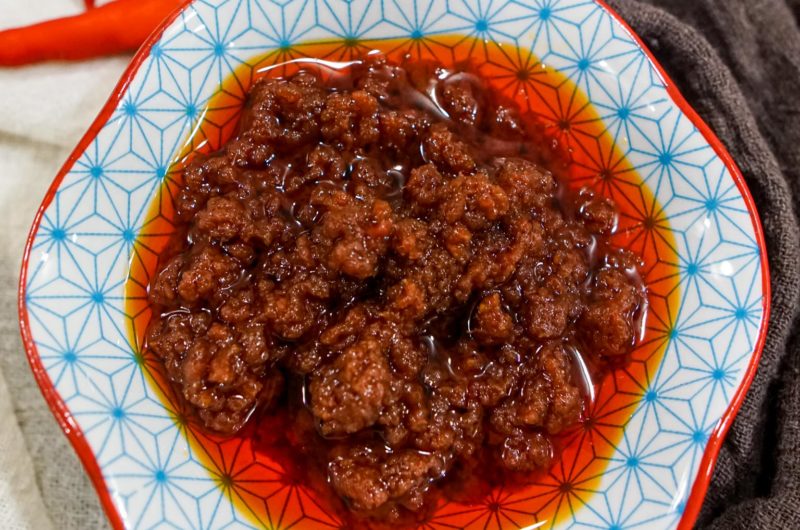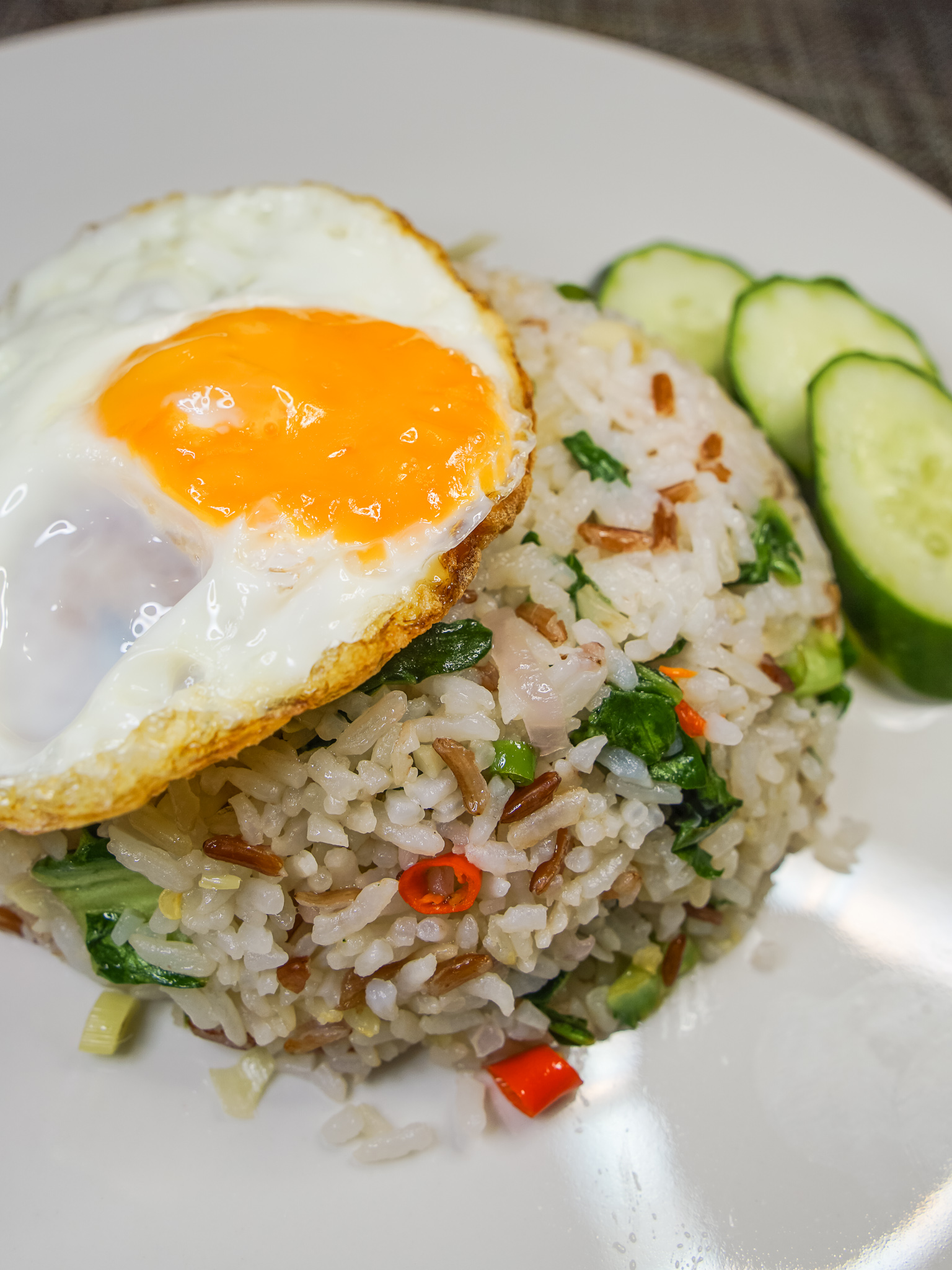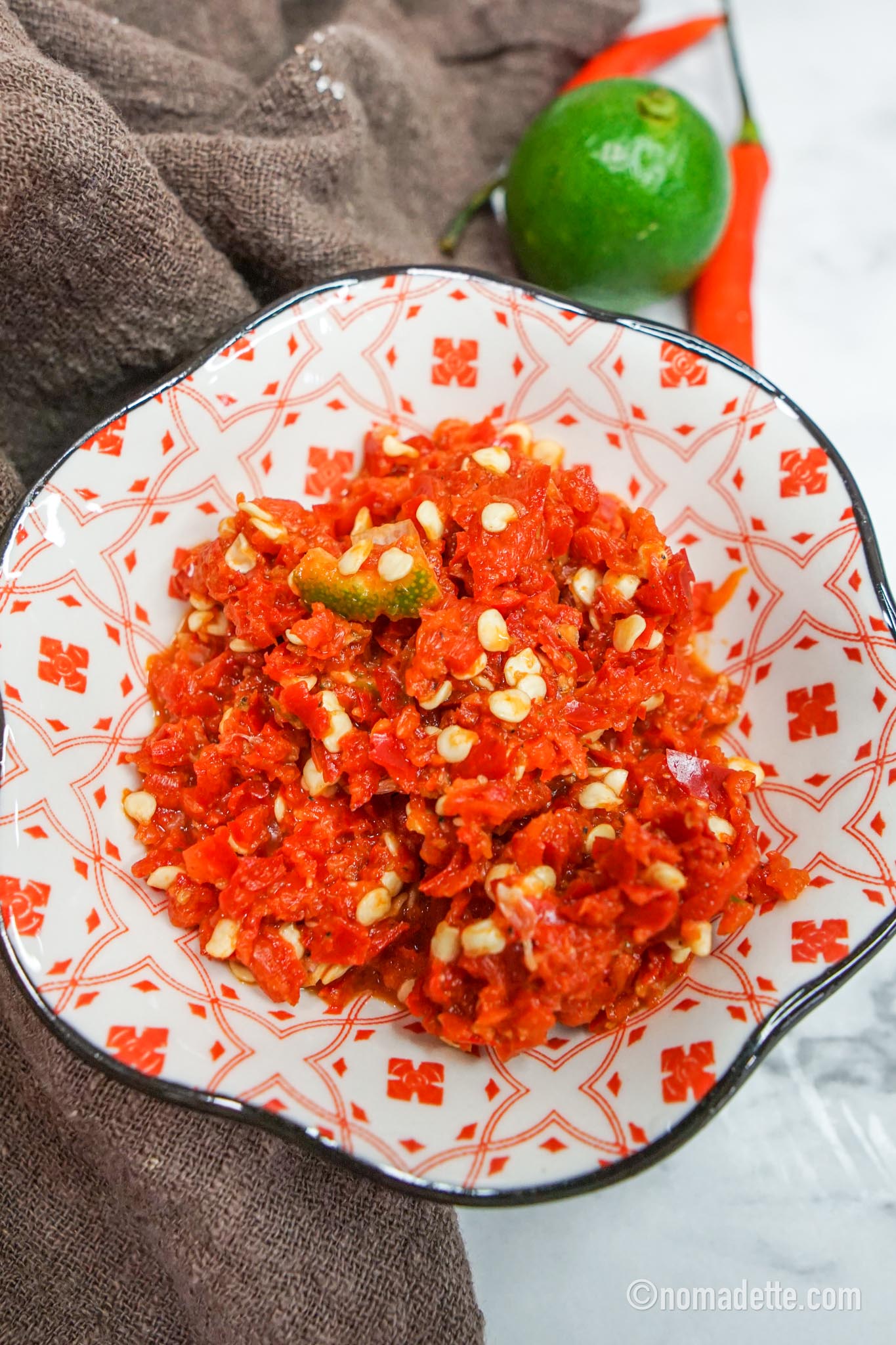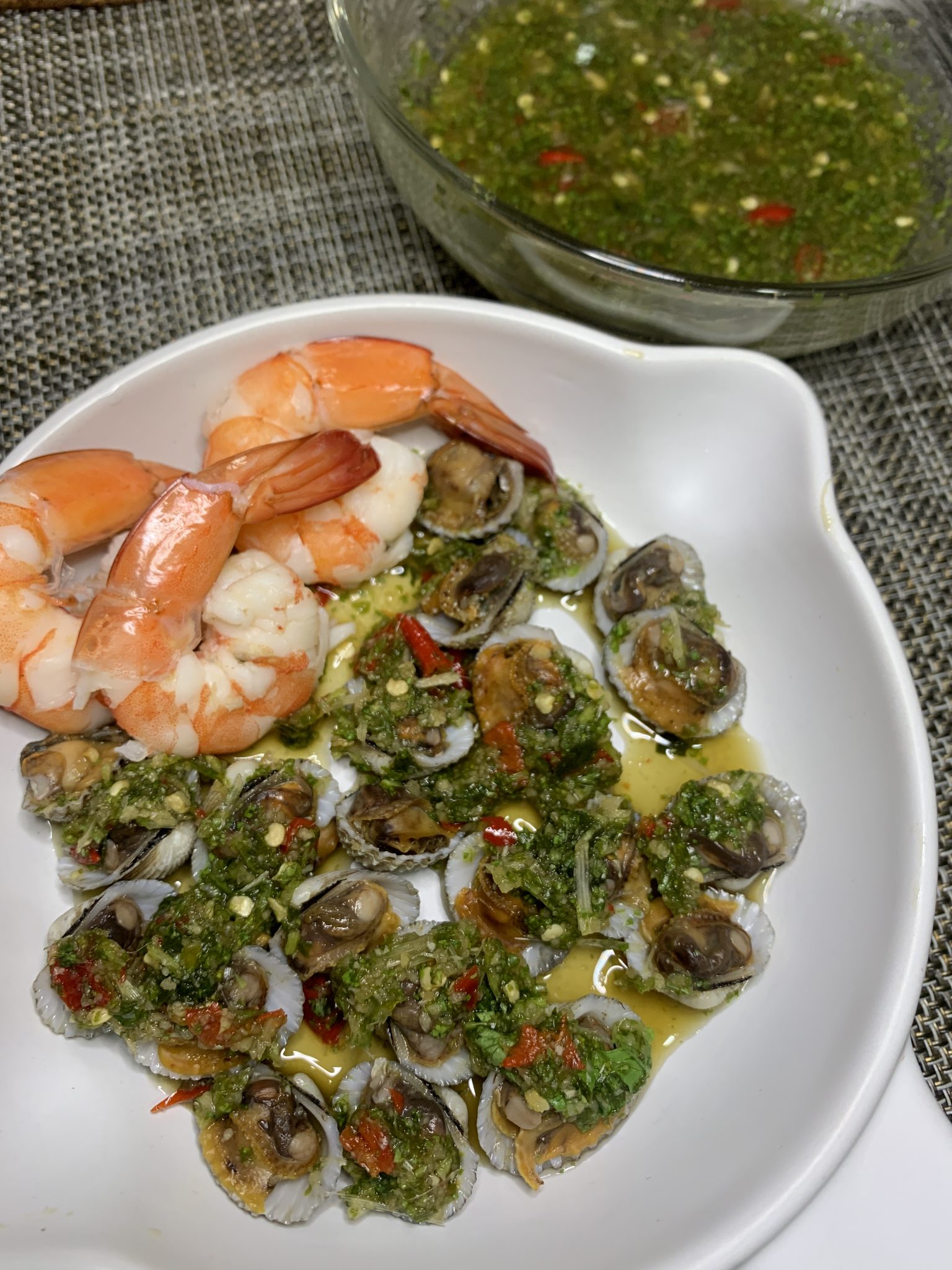This is the PERFECT spicy, umami, sambal sauce condiment for hawker noodle classics like Hokkien Mee, Laksa, Char Kway Teow.

I made Hokkien Mee recently, and I also developed a recipe for the accompanying sambal chilli sauce. I simply cannot have my Hokkien Mee without a dollop of the sambal on the side! When it comes to the sambal, I can’t seem to find the perfect ready-made jarred version in the supermarkets, so I decided to just create my own.
This is my perfect recipe for the best sambal to go with not just Hokkien Mee, but for other seafood-based hawker style noodles as well such as Laksa and Char Kway Teow. If you’re really into the spice life, you can add this to you already-spicy Mee Goreng too – I don’t judge :D. By the way, this is a great sambal for non-noodle items such as Chwee Kueh too.
This is a spicy sambal belachan with dried shrimps – full of umami flavours to complement the prawn-y and seafood flavours of the Hokkien Mee.
Dried Chilli Paste
You can’t make sambal without dried chilli paste. You can make your own, my recipe here, or you can easily purchase these ready made at supermarkets too. Another alternative is Sambal Oelek.
The type of dried red chillies I used are the standard type available at our local sueprmarkets/markets. It’s literally described as “red chillies”. These are typically Spur Chillies.
Optional, but I added Thai bird’s eye chillies to add more heat.
Achieving “Pecah Minyak”
When cooking this sambal chilli, it is important to properly cook this. You will know it is properly cooked once it has achieved “pecah minyak”, or when the oil has split. This is when the paste dries down, turns a deeper shade of red, and the surrounding oil has turned red. It should also be floating above the paste. For more details on this, I made a separate blog post explaining the “pecah minyak” process.
This “pecah minyak” process is essential for the best tasting sambal. This can take a while, some 10 to 20 minutes. Be patient! It’ll be worth it.
To blend the ingredients a lot easier, add oil instead of water to smoother the blending process. You can add water if you prefer, but do note it will take a longer time to cook. You will need to cook off the liquids for the sambal to cook properly.
Belachan
Belachan, or Terasi or Fermented Dried Shrimp Paste is a main ingredient.
You can toast your belachan for a more intense flavour, but I do not usually toast. I find the difference of taste quite minute so I don’t bother. To toast the belacan, simply place in a dry pan, and set over low heat. Flip the belachan often for an even toast. The belacan is ready once it dries and crumbles easily. Careful to not burn.
Dried Shrimps
Dried shrimps add another layer of umami flavour to the sambal. To prepare dried shrimps, add warm water and let it soak for 5 minutes to soften.
I like to chop the dried shrimps up, and add it to my sambal later on, versus blending it together with the dried chilli paste. It adds a chewy texture to my sambal. Not important, so skip if you don’t want to take the extra step, or prefer a smooth sambal.
Onions or Shallots
I use red onion and shallots interchangeably. To me they make no difference in the ultimate dish. I do tend to use red onions more than shallots, simply because it peels a lot faster and easier.
How Long Can This Keep?
If you’ve cooked it well and long enough, this can keep a long time. Keep in the fridge for the best results. In my experience, this can keep well for 3-4 weeks – although that is more because my sambal runs out by then! If you want it to last even longer, you can freeze it.
Of course, if the sambal smells off, or if there are any white mold on your sambal, throw it out.
Sambal:
- 100ml Dried Chilli Paste
- 1 Onion or 2-3 Shallots
- 3 Garlic
- 2 tbsps Belachan
- 2 tbsps Dried Shrimps
- 1 tsp Tamarind Paste
- 1/2 tsp Salt
- 1 tbsp Sugar







How long can the Sambal last outside of fridge?